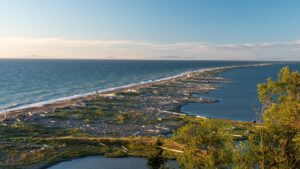County OKs Industrial Aquaculture in Dungeness National Wildlife Refuge
 This project will harm some of the most important habitat for migratory & resident wildlife in the state. Dungeness National Wildlife Refuge provides habitat for more than 250 species of birds and 41 species of land mammals. We don’t need less habitat for listed species. The very idea of an industrial oyster farm in a Refuge is mind-boggling.
This project will harm some of the most important habitat for migratory & resident wildlife in the state. Dungeness National Wildlife Refuge provides habitat for more than 250 species of birds and 41 species of land mammals. We don’t need less habitat for listed species. The very idea of an industrial oyster farm in a Refuge is mind-boggling.
The U.S. Fish & Wildlife Service listed these concerns regarding the proposal to site an industrial oyster farm within the Dungeness National Wildlife Refuge:
- These shorelines support one of the largest Brant haul out sites in Washington. Dungeness Bay & Harbor support the largest concentration of molting Scoters during fall in Washington, & serve as a migration nexus for a much broader spectrum of the Pacific Brant population than any other estuary within the Salish Sea.
- Shorebird densities are highest within the shellfish aquaculture area & the adjacent lagoon on Graveyard Spit.
- Human-caused wildlife disturbance & habitat loss are two of the most pervasive threats to shorebird and waterfowl use of the Salish Sea.
- Graveyard Spit has the highest infestation of European Green Crab within the Salish Sea. Oyster bags resting on the shoreline may provide habitat for Green Crab. If bags are carried by tides, or removed during a cleanup, crabs may be transported to new areas.
- A portion of the Dungeness/Sequim Bay Pacific Herring stock spawning grounds can occur within the lease area.
- Pacific Sand Lance & Surf Smelt spawning beaches are found within the lease area. Pacific Sand Lance are predominantly found in Dungeness Harbor & Bay from November through February, while Surf Smelt spawn May through February.
- There will be measurable, temporal losses of marine forage fish spawning habitat & production resulting from shellfish aquaculture.
- Marine forage fish ingest plastics, chemical plastic additives, & adsorb contamination.
- Increased growth of non-native oysters outside the lease can reduce available substrate for eelgrass growth & native shellfish. Introduction of a non-native species to adjacent areas would not meet the goals & objectives for managing this habitat for Refuge purposes. Clallam County Natural Environment Policy encourages efforts to restore natural shorelines to their original conditions.
- The addition of an aquaculture operation using oyster bags will increase the amount of micro- & macro-plastic on Salish Sea shorelines.

Location of proposed oyster farm withing the Refuge…

